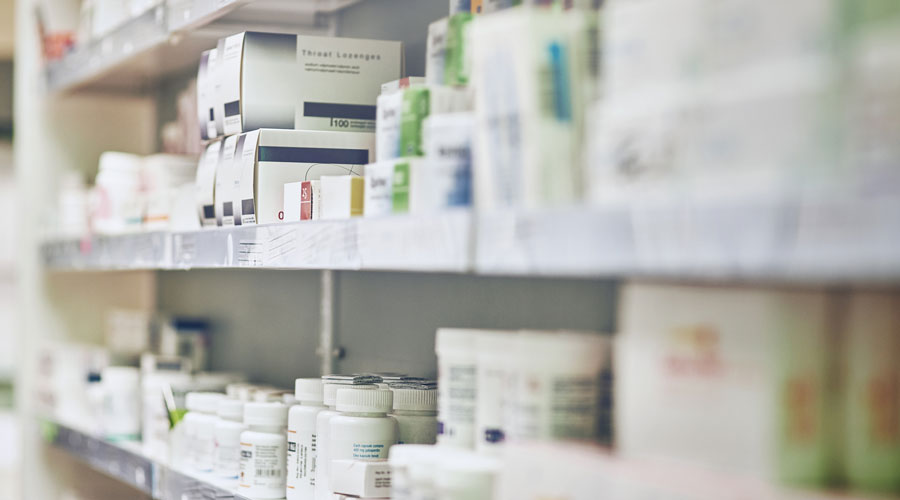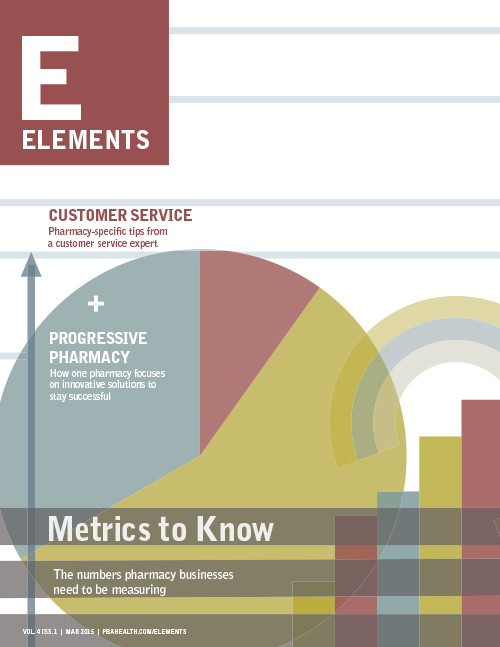Inside: Get ready to get your pharmacy inventory in order. These pharmacy inventory management tips can help you better manage your inventory—and boost profits.
You invest a lot of money in your pharmacy inventory.
Managing it effectively can lead to better cash flow and greater profitability. And we’re not only talking about everyday pharmacy inventory best practices like stock rotation.
When products expire on your shelves or you run out of fast-moving items, you lose sales and patients’ trust. These issues can also harm your relationships with your suppliers.
Get ready to get your pharmacy inventory in order. These 11 pharmacy inventory management tips can help you more efficiently manage your inventory—and boost profits.
Read Next: The Complete Guide to Pharmacy Inventory Management (Includes 7 Formulas)
1. Reduce inventory stockpiling
When back-of-store shelves overflow with a surplus of products, cash flow slows down.
You’ve tied up your cash in a lot of inventory.
If those products don’t move off your shelves—and fast—you could face cash flow issues.
Maybe you’ll have to draw on your line of credit to pay your wholesalers? Or, you’ll need to invest more of your personal cash into your business.
What to do: Avoid accumulating excess inventory. Instead, stock up slowly. And, track your sales to pinpoint the medications that move quickly—and the ones that don’t.
2. Keep enough inventory on hand
Too little inventory can mean lost sales.
If you don’t have the prescriptions patients need, they won’t wait. They’ll walk out your door and go to another pharmacy.
What to do: Keep an adequate supply of base stock and as little safety stock as possible.
Think of base stock as the foundation from which you fill prescriptions day in and day out. And, think of safety stock as the inventory you hold to protect against uncertainty.
3. Remove slow or dead product
Slow or non-moving items tie up your cash flow.
They sit on your shelves without earning you a penny.
What to do: Use your pharmacy software capabilities to run reports that identify your productive inventory, slow inventory and dead inventory.
For example, run a report to find drugs not dispensed in the last 120 days. If an NDC hasn’t been filled, you can pull it from your shelves and return it to the wholesaler. You can also sell it to a service that purchases open bottles at reduced prices.
4. Incentivize pharmacy technicians
Consider giving a small reward to pharmacy technicians to find about-to-expire or dead inventory.
When pharmacy technicians regularly check for short or outdated drugs, you can save money by returning them to the manufacturer.
And, pharmacy technicians can spot dead inventory before it expires. You’ll always have medications on the shelf that you need but that don’t move quickly. Just don’t overlook them too long.
What to do: Give pharmacy technicians a small reward for finding slow-moving and expired inventory. Offer an extra vacation day or a free lunch.
5. Conduct regular reviews
Consistently check your inventory, such as every quarter, to adjust for dispensing trends in your area. You can even designate an employee to handle this task.
Certain factors can account for fluctuations in different types of medications dispensed.
Use these regular reviews to identify trends so you can order more effectively.
Inventory trends to look for:
- Frequently-ordered items
- Loss of product
- Product costs
- Seasonal differences
- Sell rates
What to do: When you regularly review your inventory, you can account for trends and better maintain your inventory levels. Perform these regular reviews in addition to your yearly physical inventory count.
6. Engage your patients
If you have patients who need rarely-used or expensive drugs, ask them to remind you shortly before refill time.
With a little notice, you can order the item only when needed.
That way you don’t keep unnecessary expensive drugs on your shelves and you can order exactly what you need.
What to do: Maintain great relationships with your patients and they’ll likely help you out.
7. Buy quality product
When you buy consistently reliable products, you can improve your pharmacy inventory management.
Not only will you know the products you purchase meet quality standards, but you can reduce operational headaches, too.
Low-quality drugs can end up costing your pharmacy. You’ll lose labor costs, time and resources to deal with the negative outcomes associated with poor quality products.
What to do: Choose products from suppliers that meet the track-and-trace requirements of the Drug Supply Chain Security Act (DSCSA).
Also, look for suppliers certified through the Healthcare Distribution Alliance (HDA). And, check that your suppliers are Verified-Accredited Wholesale Distributors, or VAWD-certified, through the National Association of Boards of Pharmacy (NABP).
Here’s a guide to why you want to make sure your wholesalers are VAWD-certified.
And, here’s why you want your distributors to be HDA members.
8. Incorporate automation
Streamline your pharmacy inventory with an automatic inventory management system. You’ll reduce costs and improve efficiency.
An automated system will help your pharmacy maintain accurate inventory levels.
With an automated inventory management system, you’ll know:
- The inventory on hand
- Items available to fill the next prescription
- The inventory on order
What to do: Find ways to automate your pharmacy inventory management. Whether that’s improving how you use your pharmacy management system or investing in a complete automation solution.
9. Place fewer orders
If you place several small orders throughout the day, you spend more time preparing orders and putting away orders than you need to.
What to do: Place larger orders fewer times throughout the week. This practice can save you money over the long term.
For example, if you place three large orders throughout the week and place the occasional must-have base stock order, you can organize a more effective work schedule.
With consistent orders, you can plan ahead and place more staff on the days when you’ll need to put away larger orders. And, you can cut back staff hours on other days.
10. Look at the numbers
You can’t improve your pharmacy inventory management if you don’t know the numbers behind the medications.
Inventory-specific calculations you need to know:
- Total inventory
- Total inventory (as a percentage of sales)
- Inventory turnover
- Inventory turn days
- Accounts payable turnover
- Accounts payable turn days
What to do: Get a better picture of your cash flow and profitability with these metrics. For a full review of these metrics (and more!) check out this pharmacy metrics guide. Calculating these metrics can help you improve your pharmacy inventory management.
11. Don’t rely on secondary suppliers
If your pharmacy has a primary contract with a wholesaler, you could hurt your bottom line if you buy inventory from secondary suppliers too often.
Think beyond the sticker price.
The time and resources spent shopping secondary suppliers could cost you in the long run. Complying with your current primary contract to earn rebates outweighs buying one bottle of medication at a good price.
What to do: If you’re concerned about the cost structure of your current primary wholesaler contract, consider resources to help.
ProfitGuard, a primary wholesaler contract negotiation and management service, can help negotiate a competitive contract for your pharmacy. The service forms regional groups of pharmacies and bids the group’s business across multiple national wholesalers. This creates a true market competitive negotiation for your pharmacy.
 These Are the Most Important Pharmacy Metrics to Measure
These Are the Most Important Pharmacy Metrics to Measure
This white paper includes 30+ formulas to calculate the most important metrics for independent pharmacies. You’ll learn to think like a retailer, discover the methods to track and measure meaningful pharmacy metrics, and learn ways to use pharmacy metrics to get insight into business performance.
A Member-Owned Company Serving Independent Pharmacies
PBA Health is dedicated to helping independent pharmacies reach their full potential on the buy-side of their business. Founded and owned by pharmacists, PBA Health serves independent pharmacies with group purchasing services, wholesaler contract negotiations, proprietary purchasing tools, and more.
An HDA member, PBA Health operates its own NABP-accredited secondary wholesaler with more than 6,000 SKUs, including brands, generics, narcotics CII-CV, cold-storage products, and over-the-counter (OTC) products — offering the lowest prices in the secondary market.













